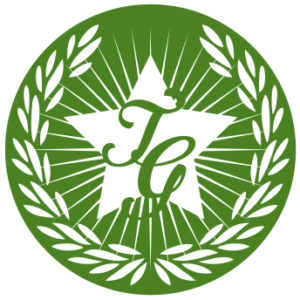Gwendolen lived in this Pembrokeshire cave: she was part woman, part crow, part rock. She decorated her glistening black body with kelp, and collected bird’s foot trefoil and celandine stars to place around her cave as night lights. This way, the deep darkness of her home was always studded by a warm yellow glow, even when storms raged outside it. Gwendolen lived in this cave for a great many years longer than any human can remember. She lived a not-quite-immortal life in silence, listening to the sounds of the waves crashing against the edges of the world. It is said that she loved how her eye would land upon infinity when she scanned the empty horizon of the sea. That her hands knew the rough dragon tooth edges of the world as if they were its maker. Gwendolen lived in this cave for just less than forever and she marked time
Some people can walk past a field with a big rock in it. Others can go on an epic adventure which involves getting chased by a herd of cows, being entranced by swallows swooping in and out of a barn, falling in a bog during an attempt to evade a second herd of cows, and discovering Norman, Vice-Chair of the Alien Interminglingatory. You’re probably thinking that I made a mistake with my language there, that I failed in my linguistic precision. You’re probably thinking, “oh, she means she found a sculpture of Norman”, but no. I mean: this Ffynnion Druidion standing stone is Norman. Or was, anyway. And will be again, if I have anything to do with it. People are always wondering how the ancients got the stones to stand up or balance in the variety of rather miraculous ways they do. They think about the kind of technology we’d
How do you like this stump? It’s lovely, isn’t it? Kind of like a melty Oscar the Grouch somehow. However, I’m sorry to be deceptive, but this isn’t actually a story about this beautiful stump. It’s just that I was unable to take a picture of the subject of the story, who was, right at that moment, behind the stump. As it goes, I was sitting down eating my lunch on the remnants of an old laid beech hedge opposite this glorious stump, when a ghostly lady slowly approached on an equally ghostly bay horse. The pair were smiling gently, clearly deep inside some shared reverie, as they ambled down the path before them. At first I was not sure if they would notice me, but as they came adjacent, the lady turned her vaguely opaque head toward me and said ‘good day’ as she doffed her top hat. After which,
Quite a long time ago, people were much, much smaller than they are now. This is where our fairy legends come from, only so much time has passed that we’ve forgotten that the little people were actually us. Bigstickasaurus hasn’t forgotten though, he’s still full of the stories from when we were small. He even told me one. In those days, we, the little people, would suspend ourselves from his spikes like ornaments on Christmas trees. Our ancestors would sit there, swinging backwards and forwards, shouting out ideas for a full moon show, practicing under cover of the new. The full moon shows were always spectacular and involved incredible circus feats. After they were finished, the little people would jump off their swings all at the same time, and perform synchronised somersaults as they landed. Then, after a prolonged series of curtsies and bows to a very loud round of applause,
Dearly beloved, I have come here today to write in defence of pigeons. Specifically, feral pigeons, those modern descendants of the domesticated type. Wood and other wild pigeons are fine and all that, but I do not speak of them here. Feral pigeons, or pidgepots as I like to call them, are some of the most memorable birds that one is likely to encounter in a grimy inner-city environment. I should know, given that I spend at least an hour every day feeding them. My love of pidgerooskis started unintentionally. As I have elsewhere reported, I accidentally installed Pigeon TV from the Lidl in my flat a few years ago. Whilst I have moved onto a direct feeding mechanism (i.e. my hand out the window and/or seeds left on the windowsill), Pigeon TV enabled me to form a lasting bond with three pigeons in particular: Axe Neck, Brownie, and Whitey Button
